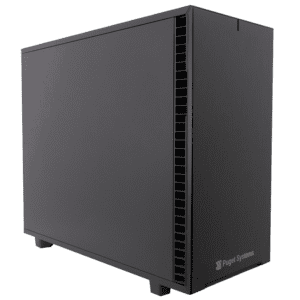NVIDIA Enroot has a unique feature that will let you easily create an executable, self-contained, single-file package with a container image AND the runtime to start it up! This allows creation of a container package that will run itself on a system with or without Enroot installed on it! “Enroot Bundles”.
Run “Docker” Containers with NVIDIA Enroot
Enroot is a simple and modern way to run “docker” or OCI containers. It provides an unprivileged user “sandbox” that integrates easily with a “normal” end user workflow. I like it for running development environments and especially for running NVIDIA NGC containers. In this post I’ll go through steps for installing enroot and some simple usage examples including running NVIDIA NGC containers.
Note: How To Install JupyterLab Extensions (Globally for a JupyterHub Server)
The current JupyterHub version 2.5.1 does not allow user installed extension for JupyterLab when it is being served from JupyterHub. This should be remedied in version 3. However, even when this is “fixed” it is still useful to be able to install extensions globally for all users on a multi-user system. This note will show you how.
Doing Quantum Mechanics with a Machine Learning Framework: PyTorch and Correlated Gaussian Wavefunctions: Part 1) Introduction
A Quantum Mechanics problem coded up in PyTorch?! Sure! Why not? I’ll explain just enough of the Quantum Mechanics and Mathematics to make the problem and solution (kind of) understandable. The focus is on how easy it is to implement in PyTorch. This first post will give some explanation of the problem and do some testing of a couple of the formulas that will need to be coded up.
Why You Should Consider PyTorch (includes Install and a few examples)
PyTorch is a relatively new ML/AI framework. It combines some great features of other packages and has a very “Pythonic” feel. It has excellent and easy to use CUDA GPU acceleration. It is fun to use and easy to learn. read on for some reasons you might want to consider trying it. I’ve got some unique example code you might find interesting too.
Easy Image Bounding Box Annotation with a Simple Mod to VGG Image Annotator
In this post I go through a simple modification to the VGG Image Annotator that adds easy to use buttons for adding labels to image object bounding-boxes. It is very fast way to do what could be a tedious machine learning data preparation task.
The Best Way to Install TensorFlow with GPU Support on Windows 10 (Without Installing CUDA)
In this post I’ll walk you through the best way I have found so far to get a good TensorFlow work environment on Windows 10 including GPU acceleration. YOU WILL NOT HAVE TO INSTALL CUDA! I’ll also go through setting up Anaconda Python and create an environment for TensorFlow and how to make that available for use with Jupyter notebook. As a “non-trivial” example of using this setup we’ll go through training LeNet-5 with Keras using TensorFlow with GPU acceleration. We’ll get a setup that is 18 times faster than using the CPU alone.
Install TensorFlow with GPU Support on Windows 10 (without a full CUDA install)
In this post I’ll walk you through the best way I have found so far to get a good TensorFlow work environment on Windows 10 including GPU acceleration. I’ll go through how to install just the needed libraries (DLL’s) from CUDA 9.0 and cuDNN 7.0 to support TensorFlow 1.8. I’ll also go through setting up Anaconda Python and create an environment for TensorFlow and how to make that available for use with Jupyter notebook. As a “non-trivial” example of using this setup we’ll go through training LeNet-5 with Keras using TensorFlow with GPU acceleration. We’ll get a setup that is 18 times faster than using the CPU alone.
Install TensorFlow with GPU Support the Easy Way on Ubuntu 18.04 (without installing CUDA)
TensorFlow is a very important Machine/Deep Learning framework and Ubuntu Linux is a great workstation platform for this type of work. If you are wanting to setup a workstation using Ubuntu 18.04 with CUDA GPU acceleration support for TensorFlow then this guide will hopefully help you get your machine learning environment up and running without a lot of trouble. And, you don’t have to do a CUDA install!
